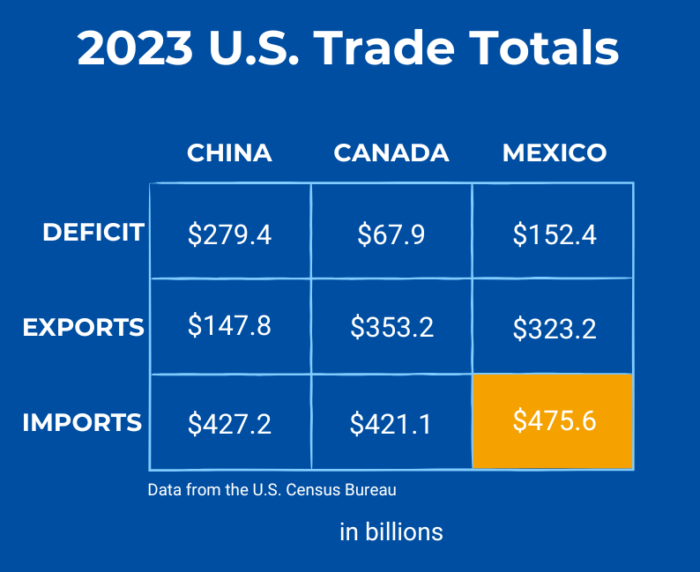
Evaluating Country of Origin and Tariffs? Start Here!
By USA In Insight On 8th February 2024
It's always a good idea to evaluate country-of-origin implications regarding tariffs you may face at the time of import. U.S. Census Bureau data can be a good starting point since they compile statistics from Customs entry data, revealing the top countries by value.
To help narrow down the list of where to source goods, let's look at 2023's top countries of origin.
In 2023, Mexico ranked as the number one country of origin, with an increase of $20.8 billion in value from 2022, surpassing China (2) and Canada (3). Unsurprisingly, these three countries maintain the top three positions for imports, as so far, no other country comes close to the over $400 billion Customs value. 
Where else are U.S. imports coming from?
Only four other countries totaled over one hundred billion U.S. dollars in 2023.
- Germany $159.7
- Japan $147.3
- Korea, South $116.2
- Vietnam $114.4
Notably, most of these top countries have trade agreements with the U.S., providing duty-free or reduced tariffs on many products coming into the U.S., except for China, Germany, and Vietnam. On the flip side, the opposite of a trade agreement, many Chinese goods are subject to additional tariffs of 7.5% and 25%. An oversimplified conclusion might be that tariffs don't necessarily dictate whether or not importers will source from a particular country- other considerations such as product cost and availability, expertise, and technology factor in.
Which origins should you avoid?
Importing from Column 2 Countries tops the list due to high tariffs, among other restrictions meant to stop trade.
In 2023, there were low imports from Russia, Belarus, and Cuba, and nothing was reported from North Korea. Russia ranked 56 with only $4.6 billion in value, followed by Belarus, which ranked 147 with $47 million in value, and Cuba, which ranked 195 with $4.1 million.
Are any tariff changes expected in 2024?
This year holds some uncertainty on what may change with tariffs after the November Presidential Election, especially if there will be a new President. Some candidates are already voicing their ideas on trade, including a 10% across-the-board tariff and up to 60% additional tariff on Chinese products.
However, for 2024, it is reasonable to expect little to change when it comes to tariffs and trade agreements. One topic, Section 301 China tariffs, is still in the air but alive and well for now. 2025 might be a different story.
Don't hesitate to contact your local Account Manager or Customs Brokerage team for assistance with evaluating country-of-origin-related tariffs.

Tatiana Snigurski
Business Development Manager - Customs & Trade Compliance
NNR GLOBAL LOGISTICS USA - Chicago
Email: tsnigurski@nnrusa.com
